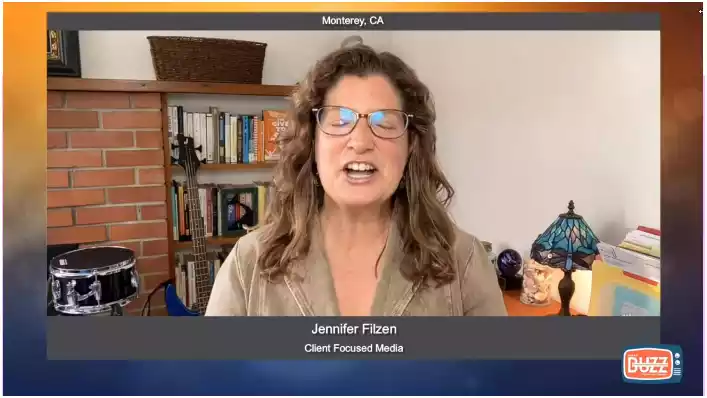Common Challenges and Solutions in Precertification: Effective Solutions
Uncover the common challenges and solutions in precertification and explore innovative solutions to streamline healthcare processes and improve patient care.

Understanding prior authorization insurance is crucial for ensuring that necessary treatments and medications are covered. This process requires obtaining approval from your insurance provider before receiving certain services. We’ll explore the steps involved, the importance of securing prior authorization, and how it impacts patient care.
Let’s dive into the details to make your healthcare experience smoother!
Table of Contents
Common Challenges and Solutions in Precertification

Common Challenges Encountered During the Precertification Process
Complicated Paperwork and Documentation Requirements
One obstacle in the precertification process is the often intricate paperwork involved. Healthcare providers must submit documentation to insurance companies, including medical records, test results, and doctor’s notes. The level of detail and information required can vary significantly among insurance plans. This variability makes it an uphill task for staff that can consume much time. Mistakes or missing details in the paperwork may result in delays or rejections of precertification requests, frustrating providers and patients.
Long Delays in Approval Processes
Another issue is the waiting period experienced during the processing of precertification requests. These delays can lead to repercussions, such as impeding access to vital treatments and causing undue stress for patients and their loved ones. Insurers may take days or weeks to assess a request, especially if additional information is required or the case is intricate. This delay can disrupt treatment schedules and jeopardize patient outcomes, underscoring the necessity for streamlined processing mechanisms.
Communication Challenges
Smooth coordination among healthcare providers, insurers, and patients facilitates a seamless precertification process. However, breakdowns in communication pose an obstacle, often resulting in misunderstandings, misinformation, and missed deadlines. Misinterpretations can arise at various stages, from submitting precertification requests to subsequent follow-ups and final approvals. Factors like language barriers, vague guidelines, and inconsistent communication channels contribute to these challenges, emphasizing the importance of transparent lines of communication.
Appeals
Despite providing all documentation with effective communication practices, precertification requests may still face denials. Denials can stem from discrepancies in medical necessity assessments, coding errors, or noncompliance with specific insurance plan criteria.
Facing a denial can impact patients who count on approved insurance coverage for their care. Navigating the appeals process can also be challenging as it involves gathering paperwork, investing time, and putting in effort from healthcare providers and patients.
Lack of Clarity in Approval Criteria
The criteria insurers use to approve precertification requests are only sometimes clear or consistently applied, adding another layer of complexity. Healthcare providers may need help grasping the requirements and reasoning behind approvals or rejections. This lack of transparency can result in repeated errors and heightened frustration for providers, who might feel they need to operate more carefully. Improving transparency and setting criteria could help minimize mistakes and expedite approval. By addressing these hurdles, healthcare providers and insurance companies can collaborate to simplify the precertification process, ultimately enhancing efficiency and elevating the level of care.
Practical Approaches to Overcoming Challenges
 Simplifying Paperwork and Documentation Requirements
Simplifying Paperwork and Documentation RequirementsTo address the intricacies of paperwork and documentation, healthcare providers can introduce templates and checklists tailored to insurance plans’ needs. Utilizing electronic health records (EHR) systems equipped with precertification modules can automate some of the necessary documentation tasks, reducing manual errors and ensuring accurate compilation of all essential information.
Educating staff through training sessions about the nuances of documentation can also help reduce errors and omissions, thus speeding up the approval process.
Improving Approval Process Efficiency
Shortening approval wait times involves implementing real-time processing systems and leveraging technology-driven solutions. Healthcare providers may opt for automated submission tools to streamline requests by connecting with insurance systems. Moreover, creating specialized precertification teams dedicated to handling these requests can effectively manage workflows. Accelerate processes. Prioritizing cases and collaborating closely with insurers can further expedite treatment approvals.
Enhancing Communication Channels
Enhancing communication necessitates establishing consistent and accessible lines of communication among all stakeholders. This can be facilitated by integrating messaging platforms with Electronic Health Record (EHR) systems for real-time communication and informing stakeholders about request statuses. Regular meetings between healthcare providers and insurance representatives can aid in clarifying guidelines, addressing concerns promptly, and nurturing relationships. Offering support and providing patients with clear, concise information can enhance their understanding of the precertification process.
Dealing with Denials and Simplifying Appeal Processes
Healthcare providers should focus on precise documentation that showcases necessity while adhering to insurers’ criteria to reduce denials. Setting up a well-structured appeals system is essential when handling denials. Healthcare providers can create an appeals form and keep a record of successfully appealed cases for future reference. Following up proactively and documenting all interactions in detail can significantly increase the chances of reversing denials and getting approvals.
Enhancing Transparency in Criteria
Improving transparency means pushing for more consistent criteria from insurance companies. Healthcare providers can collaborate with insurers to establish guidelines and criteria for precertification that are easy to access and understand—keeping these guidelines updated regularly. Providing training to staff can help them stay informed about requirements and reduce mistakes. Asking insurers for explanations for denials can also help providers grasp the criteria for future requests. Implementing these measures can streamline, transparently, and less burdensome the precertification process for healthcare providers, insurers, and patients. This joint effort not only eases the load but also ensures patients get timely access to the required care.
I'm very thankful for Portiva who I know is looking after my practice while I'm gone the virtual assistants can manage prescription refills, documents they can triage patients and just kind of answer administrative questions and they can handle a lot on their own. But also, they're very good about contacting me if there's any emergency or anything I need to attend to. So I'm very thankful for Portiva they can help almost any provider almost anywhere and it really allows for some good work-life balance as I'm getting to experience right now at my family farm so I'm very thankful for Portiva and I'm very happy to use their services"

Board Certified Family Medicine Physician

Portiva's Virtual Medical Assistant - I have all the support I need. There's somebody checking my email, any patient messages. Patients are still able to schedule and handle any scheduling issues and any kind of billing that needs to still go through. Portiva hands handles it all for me. I have support i have somebody that I can access 24/7 pretty much. It's all very seamless. If somebody has an emergency or needs a medication called in. I know that the va's at portiva will handle that for me.

Board Certified Family Medicine Physician

Conclusion

To learn more about patient rights that can enhance your medical practice. Discover more about Portiva and unlock a world of possibilities by visiting our homepage today!
- Common challenges and solutions in precertification
- Managing prior authorization effectively
- Effective strategies for reviewing and updating prior authorization policies
- Supporting the policy of prior authorization
- Handling authorization denials in healthcare
- Addressing challenges with prior authorization
- Submitting prior authorization
- Preventing and addressing authorization denials effectively
- Prior authorization for improved patient access and healthcare delivery
- Managing prior authorization rules
- Prior authorization workflow for better patient care
- Overcoming challenges in authorization denials management
- Seamless monitoring with precertification tech
- Achieving success with prior authorization technology
- Key aspects of preauthorization
- Handling precertification requests and approvals
- Prior authorization and ensuring quality care
- Ensuring care with preauthorization strategies
- Precertification and virtual medical assistants
- Precertification for healthcare administrators

